Would you have imagined that most languages around the world have a common origin, belonging at most to a couple of origin groups? Minna Sundberg, a twenty-seven year old Swedish illustrator, had the idea of drawing the origins of languages in a family tree, using Ethnologue data to create the branches and crown of the tree, allowing everyone to easily understand the origins and use of their language.
Each branch represents a derivation from the original strains, which were initially divided into two distinct groups: Indo-European and Uralic. The Indo-European then divided into two main sections, namely the European and the Indoiranian, and then gradually branched out into the different languages across Europe and Asia.
Obviously, not all of the world’s languages are represented (there’s over 6000), but only those which, according to Ethnologue data, are now spoken by the largest number of people. The size of the leaf bushes in fact indicates the number of people who speak the language, and many dialects are spoken by less than a million people.
Main view of the tree:
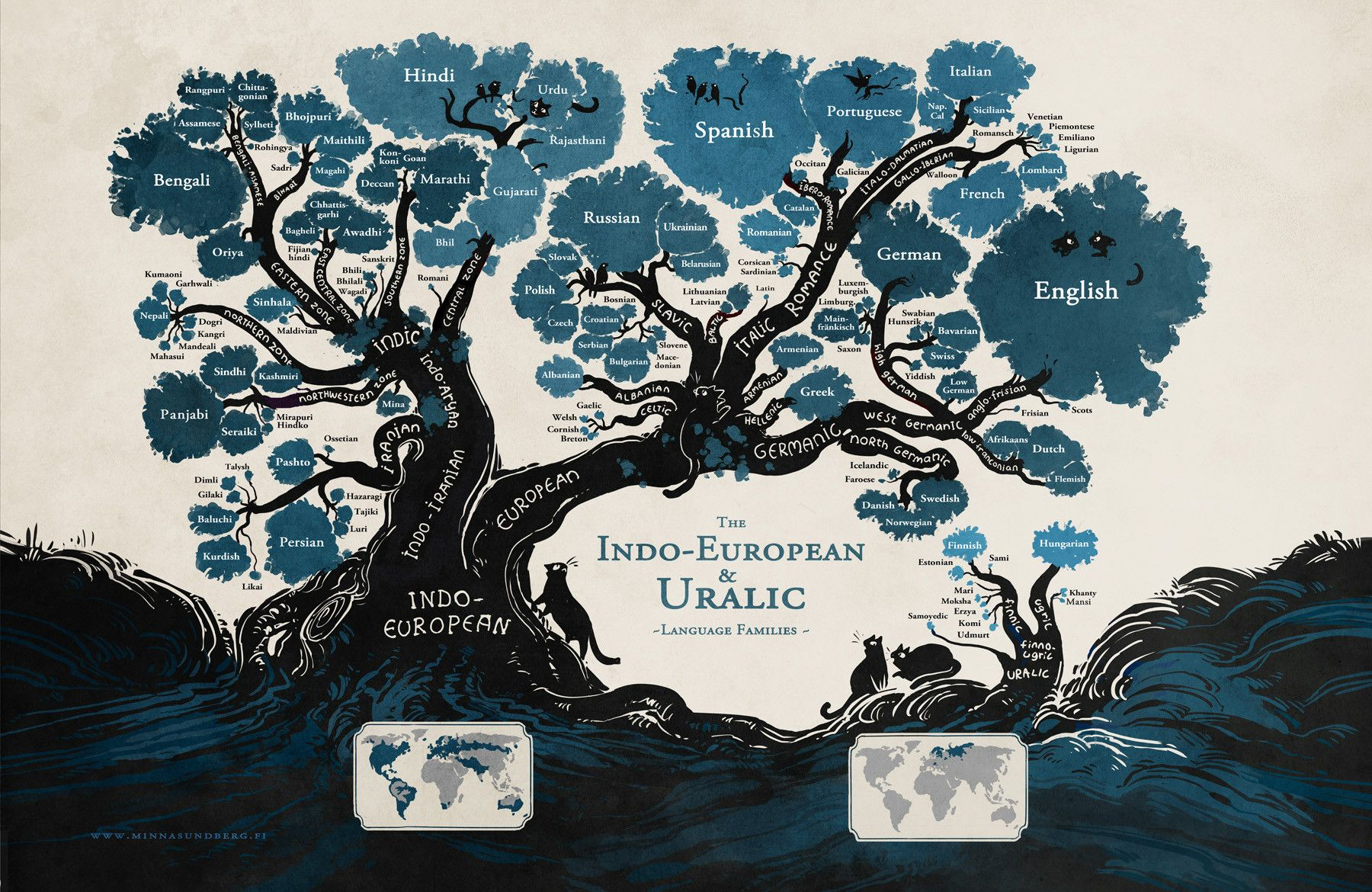
The Indian languages:
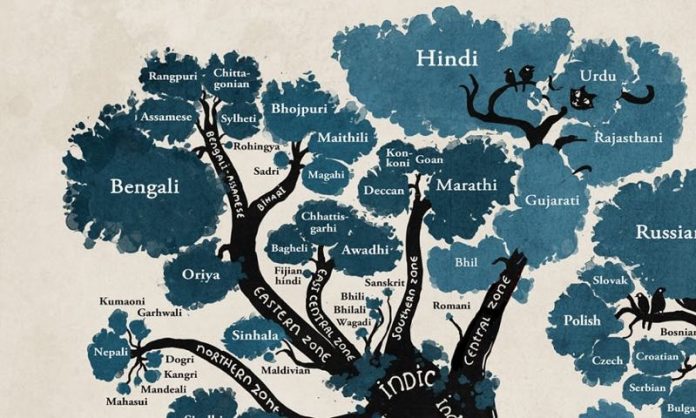
The Germanic branch, where English is born:
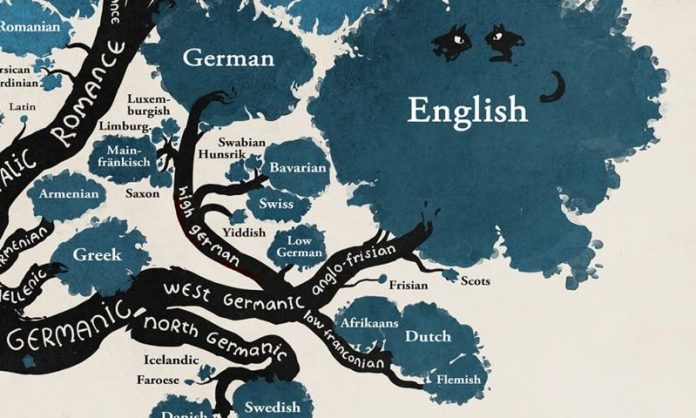
Uralic languages:
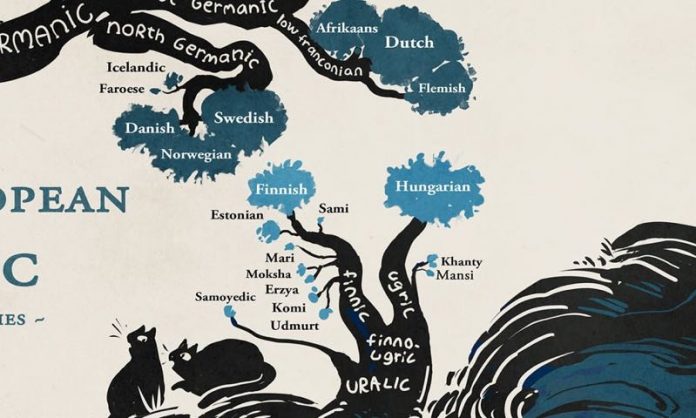
Slavic, Romance and Germanic branches:
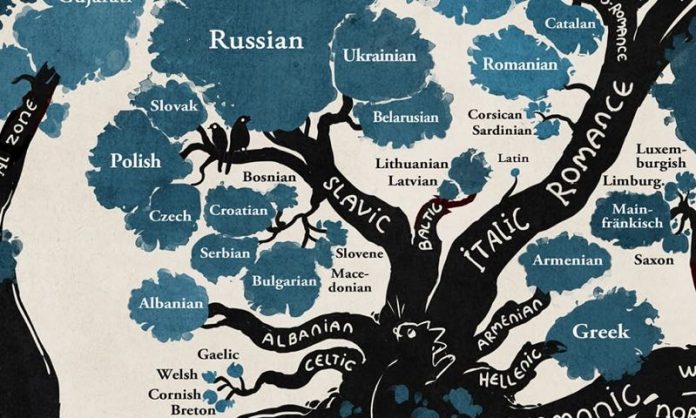
Sources: The Guardian, Minna Sundberg.






